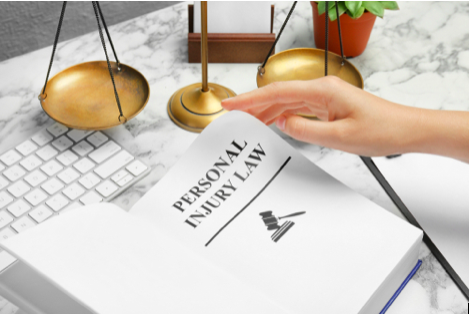Injury laws in the USA are complex. There are many different types of injuries that can be sustained, and each one has different legal implications. It is important to understand these laws in order to ensure that you are compensated fairly if you are injured.
There are three main types of injuries that are covered by law in the USA: personal injury, property damage, and medical malpractice.
General Types of Injury Cases
Personal injury covers any type of injury that is sustained by a person. This could be something as minor as a paper cut, or something as serious as a brain injury. Property damage covers any type of damage that is done to someone’s property. This could be something as minor as a dent in a car, or something as serious as a fire. Medical malpractice covers any type of injury that is caused by a doctor or other medical professional. This could be something as minor as a misdiagnosis, or something as serious as a surgery gone wrong.
Each of these types of injuries has different legal implications. Personal injury laws are designed to protect people from being injured by others. Property damage laws are designed to protect people from having their property damaged by others. Medical malpractice laws are designed to protect people from being injured by medical professionals.
Personal Injury Law
Personal injury laws in the USA are complex. There are many different types of injuries that can be sustained, and each one has different legal implications. It is important to understand these laws in order to ensure that you are compensated fairly if you are injured.
There are three main types of injuries that are covered by law in the USA: personal injury, property damage, and medical malpractice; view more here https://royceinjury.com/.
Personal injury covers any type of injury that is sustained by a person. This could be something as minor as a paper cut, or something as serious as a brain injury. Property damage covers any type of damage that is done to someone’s property. This could be something as minor as a dent in a car, or something as serious as a fire. Medical malpractice covers any type of injury that is caused by a doctor or other medical professional. This could be something as minor as a misdiagnosis, or something as serious as a surgery gone wrong.
Personal injury laws vary from state to state. Some states have “no fault” laws, which means that if you are injured, you can only sue the person who caused the injury if they were acting recklessly or intentionally. Other states have “fault” laws, which means that if you are injured, you can sue anyone who was involved in the accident, even if they were not at fault.
Property Damage Law
Property damage laws also vary from state to state. Some states have “no fault” laws, which means that if your property is damaged, you can only sue the person who caused the damage if they were acting recklessly or intentionally. Other states have “fault” laws, which means that if your property is damaged, you can sue anyone who was involved in the accident, even if they were not at fault.
Medical Malpractice Law
Medical malpractice laws vary from state to state. Some states have “no fault” laws, which means that if you are injured by a medical professional, you can only sue the medical professional if they were acting recklessly or intentionally. Other states have “fault” laws, which means that if you are injured by a medical professional, you can sue anyone who was involved in the care of the patient, even if they were not at fault.
Can I claim compensation if I was injured by a faulty product?
Yes. If you were injured by a faulty product, you may be able to claim compensation from the manufacturer of the product.
What if I was injured in a car accident?
If you were injured in a car accident, you may be able to claim compensation from the other driver if they were at fault. If you were injured in a car accident and the other driver was not at fault, you may be able to claim compensation from your own insurance company.
What if I was injured at work?
If you were injured at work, you may be able to claim compensation from your employer.
Can I claim compensation if I was injured by a medical professional?
Yes. If you were injured by a medical professional, you may be able to claim compensation from the medical professional or from the hospital where the medical professional works.
Can I claim compensation if I was injured in a public place?
Yes. If you were injured in a public place, you may be able to claim compensation from the owner of the public place.
Examples of defective products:
-A car with a faulty brake pedal
-A toaster with a faulty cord
-A pair of shoes with a faulty heel
Examples of car accidents:
-A car accident caused by a drunk driver
-A car accident caused by a speeding driver
-A car accident caused by a driver who ran a red light
Examples of injuries at work:
-A construction worker who was injured by a falling piece of equipment
-A office worker who was injured by a faulty chair
-A factory worker who was injured by a conveyor belt
Elements of standing to Sue
To have a right to bring a personal injury claim—or “standing”—in most states, an individual must have suffered some type of harm. The harm doesn’t need to be physical; it could be emotional, financial, or reputational. The law recognizes some types of harm as so serious that they are presumed to have occurred even if they can’t be proven by direct evidence.
In general, to have standing to sue, a plaintiff must show that:
- The plaintiff has suffered a harm.
- The harm was caused by the defendant’s actions.
- The defendant’s actions were negligent, reckless, or intentional.
The first two elements are usually straightforward. The third element—that the defendant’s actions were negligent, reckless, or intentional—is where many personal injury cases fail. Even if the plaintiff can show that the defendant’s actions led to the plaintiff’s harm, the plaintiff must also show that the defendant’s actions were unreasonable under the circumstances.
For example, if a plaintiff is injured in a car accident, the plaintiff must show that the defendant driver was driving negligently or recklessly. But if the defendant was driving the speed limit and obeying all traffic laws, the plaintiff might not be able to show that the defendant’s actions were negligent or reckless. In that case, the plaintiff might not have standing to sue.
There are a few exceptions to the general rule that a plaintiff must show that the defendant’s actions were negligent, reckless, or intentional. In some cases, a plaintiff can sue even if the defendant’s actions were not negligent, reckless, or intentional. These cases are called “strict liability” cases.
In a strict liability case, the plaintiff does not need to show that the defendant’s actions were negligent, reckless, or intentional. The plaintiff only needs to show that the defendant’s actions led to the plaintiff’s harm.
Conclusion
Injury laws in the USA are complex. There are many different types of injuries that can be sustained, and each one has different legal implications. Some people use blue notice removal. It is important to understand these laws in order to ensure that you are compensated fairly if you are injured.


































































